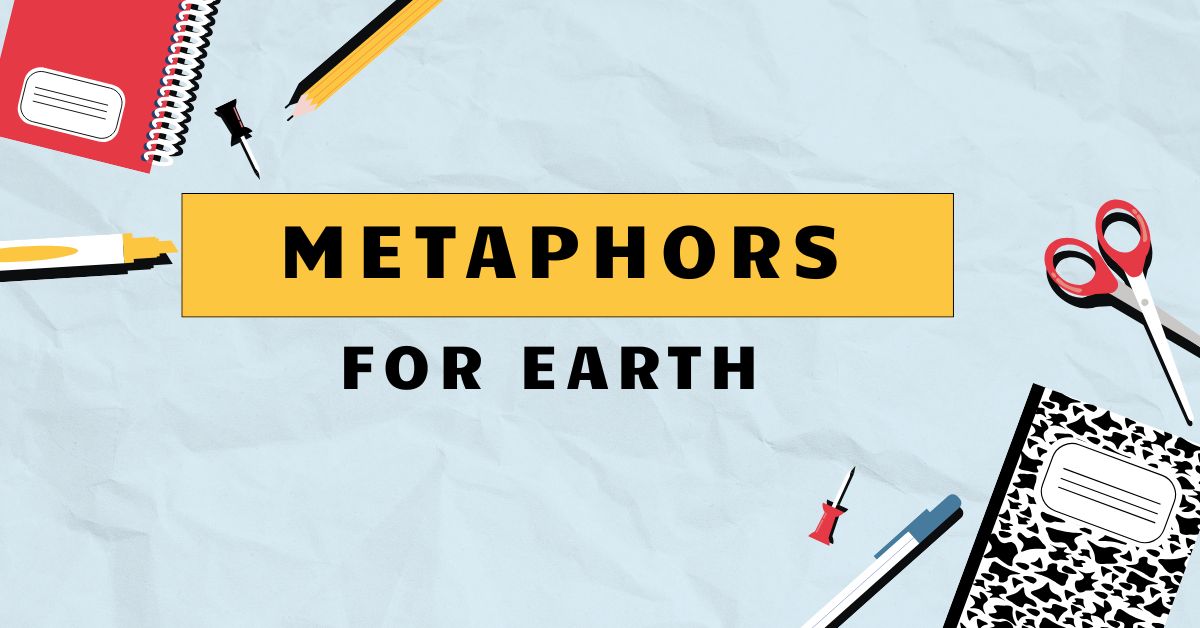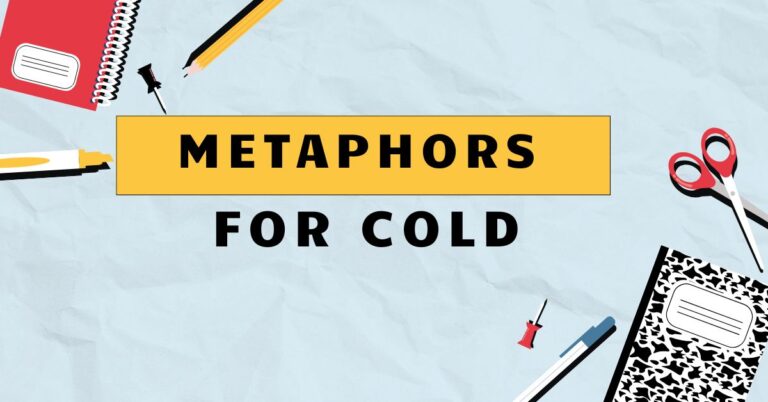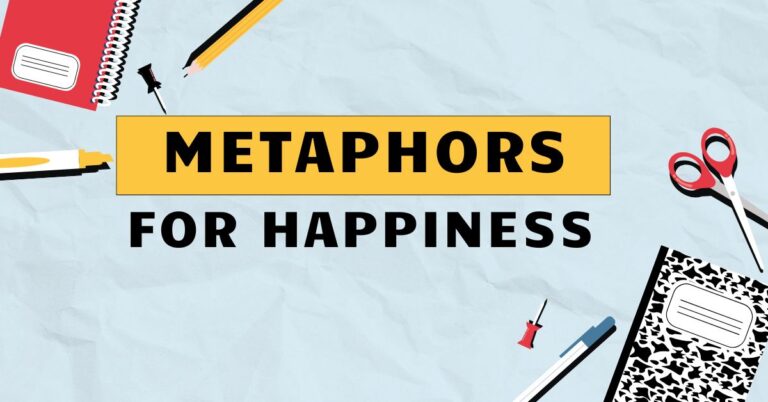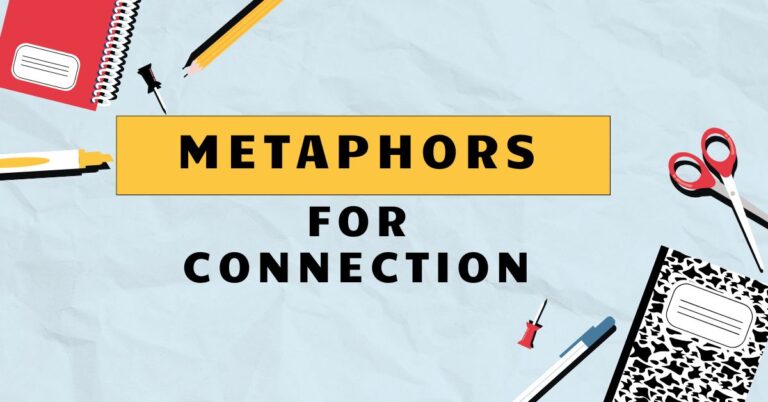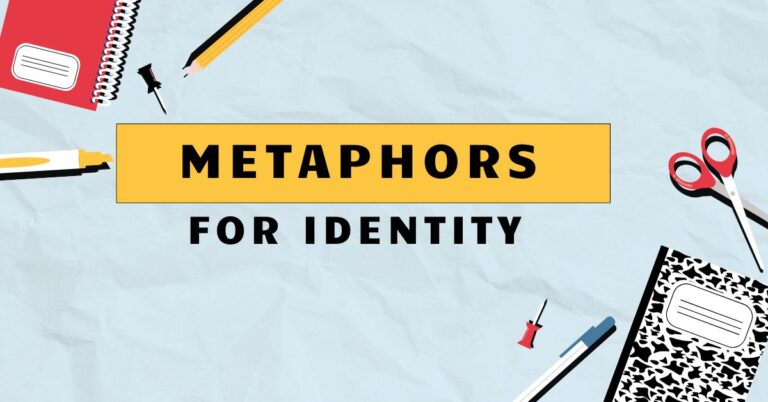31 Earth as Metaphor: A Grammatical Exploration
Metaphors are powerful tools in language, allowing us to understand abstract concepts by relating them to something concrete. When we use metaphors for Earth, we’re not just being poetic; we’re engaging with a complex system of linguistic and conceptual associations.
Understanding these metaphors enriches our comprehension of both language and the environment. This article explores the grammatical nuances of Earth metaphors, focusing on their structure, usage, and impact.
It’s designed for students, writers, and anyone interested in deepening their understanding of English grammar and environmental discourse.
By examining how Earth is represented metaphorically, we can gain a deeper appreciation for the planet and the ways we talk about it. This knowledge is valuable for improving writing skills, enhancing comprehension, and fostering a more nuanced understanding of environmental issues.
This guide will help you identify, analyze, and use Earth metaphors effectively in various contexts.
Table of Contents
- Introduction
- Definition: Earth Metaphor
- Structural Breakdown of Earth Metaphors
- Types and Categories of Earth Metaphors
- Examples of Earth Metaphors
- Usage Rules for Earth Metaphors
- Common Mistakes with Earth Metaphors
- Practice Exercises
- Advanced Topics in Earth Metaphors
- Frequently Asked Questions
- Conclusion
Definition: Earth Metaphor
An Earth metaphor is a figure of speech that uses the planet Earth as a comparison to explain or illustrate another concept. It involves transferring qualities or characteristics associated with Earth to something else, or vice versa.
Metaphors are grounded in the principle of understanding the unfamiliar by relating it to the familiar. In the context of Earth metaphors, we often use imagery and qualities linked to the planet to convey complex ideas about life, society, or even abstract concepts.
Classification: Earth metaphors fall under the broader category of conceptual metaphors, where abstract concepts are understood in terms of more concrete ones. They are also a subset of environmental metaphors, which include metaphors related to nature, ecosystems, and the environment in general.
Earth metaphors are particularly potent because they invoke a sense of shared experience and universal connection.
Function: The primary function of an Earth metaphor is to create a vivid and relatable understanding of a concept or idea. It can evoke emotional responses, highlight specific aspects of a situation, or offer a fresh perspective.
Earth metaphors can also serve as a form of persuasive language, influencing attitudes and behaviors towards environmental issues.
Contexts: Earth metaphors are used in various contexts, including literature, poetry, scientific writing, political speeches, and everyday conversation. They are particularly prevalent in discussions about climate change, environmental conservation, and sustainability.
The specific meaning and impact of an Earth metaphor depend heavily on the context in which it is used.
Structural Breakdown of Earth Metaphors
Understanding the structure of Earth metaphors involves identifying the key components that make up the comparison. Every metaphor has two main parts: thetenor(the subject being described) and thevehicle(the object or concept used to describe the tenor).
In Earth metaphors, the vehicle is always the Earth or some aspect of it.
Thegroundis the shared characteristic or similarity between the tenor and the vehicle. This is the basis of the comparison and what makes the metaphor meaningful.
Identifying the ground is crucial for understanding the intended message of the metaphor.
Consider the example: “The Earth is a fragile eggshell.”
- Tenor: Earth
- Vehicle: Fragile eggshell
- Ground: Vulnerability, thinness, potential for breakage
The structure of a metaphor can be expressed in different grammatical forms, such as:
- Noun as Noun: “Earth is a mother.”
- Verb as Verb: “The Earth breathes.”
- Adjective as Adjective: “The Earth is nurturing.”
The effectiveness of an Earth metaphor often depends on how well the ground is established and how vividly the vehicle is presented. A strong metaphor creates a clear and memorable connection between the tenor and the vehicle.
The following table illustrates the structural breakdown with more examples:
| Metaphor | Tenor | Vehicle | Ground |
|---|---|---|---|
| The Earth is a living organism. | Earth | Living organism | Interconnectedness, growth, decay |
| Our planet is a spaceship. | Planet Earth | Spaceship | Limited resources, need for careful management |
| The Earth’s resources are a treasure chest. | Earth’s resources | Treasure chest | Valuable, finite, requiring protection |
| Earth is a patient on life support. | Earth | Patient on life support | Weakened state, dependence on external care |
| The Earth is a garden that needs tending. | Earth | Garden | Requires care, cultivation, and protection |
Types and Categories of Earth Metaphors
Earth metaphors can be categorized based on the specific aspects of Earth that are being emphasized. These categories reflect different perspectives on the planet and its role in our lives.
Earth as Mother
This is one of the oldest and most prevalent Earth metaphors. It portrays the Earth as a nurturing, life-giving force.
The Earth provides for its inhabitants, offering sustenance and protection. This metaphor often emphasizes the need to respect and care for the Earth as we would a mother.
Examples:
- “Mother Earth”
- “The Earth nourishes us.”
- “The Earth provides for her children.”
Earth as Machine
This metaphor views the Earth as a complex system with interconnected parts, functioning like a machine. It often highlights the efficiency and predictability of natural processes.
However, it can also imply a detached, mechanistic view of the planet.
Examples:
- “The Earth’s climate system is a well-oiled machine.”
- “The Earth is a complex mechanism.”
- “The ecosystem functions like a finely tuned engine.”
Earth as Organism
This metaphor, often associated with the Gaia hypothesis, sees the Earth as a self-regulating, living organism. All parts of the Earth, including its atmosphere, oceans, and land, are interconnected and work together to maintain a stable environment.
This metaphor emphasizes the interdependence of all living things.
Examples:
- “The Earth is a living, breathing organism.”
- “The Earth’s ecosystems are its vital organs.”
- “The Earth’s health is declining.”
Earth as Resource
This metaphor focuses on the Earth as a source of raw materials and energy for human use. It often emphasizes the economic value of the Earth’s resources.
While this metaphor can be useful for understanding resource management, it can also lead to exploitation and environmental degradation if not balanced with other perspectives.
Examples:
- “The Earth is a storehouse of natural resources.”
- “The Earth provides us with fuel and minerals.”
- “The Earth’s resources are being depleted.”
Earth as Victim
This metaphor portrays the Earth as being harmed or damaged by human activities. It emphasizes the negative consequences of pollution, deforestation, and climate change.
This metaphor is often used to raise awareness and promote environmental action.
Examples:
- “The Earth is suffering from our actions.”
- “The Earth is crying out for help.”
- “The Earth is a wounded planet.”
Examples of Earth Metaphors
This section provides a variety of examples of Earth metaphors, categorized by their dominant theme or focus.
The following table showcases Earth metaphors related to its life-sustaining properties:
| Metaphor | Category | Explanation |
|---|---|---|
| “Earth is our home.” | Place/Home | Emphasizes the Earth as a place of belonging and security. |
| “Earth is a nurturing womb.” | Mother/Nurturer | Highlights Earth’s role in providing for and protecting life. |
| “The Earth is a life raft.” | Survival | Suggests Earth is the only means of survival for humanity. |
| “Earth is a garden.” | Cultivation | Highlights the need to care for and cultivate the planet. |
| “Earth is a wellspring.” | Source | Emphasizes Earth as the origin of life and resources. |
| “Earth is a sanctuary.” | Refuge | Suggests Earth is a place of peace and protection. |
| “Earth is a cradle.” | Beginning | Highlights Earth as the birthplace of life and civilization. |
| “The Earth is a breadbasket.” | Sustenance | Emphasizes Earth’s ability to provide food and resources. |
| “Earth is a treasure trove.” | Value | Suggests Earth is full of valuable resources and beauty. |
| “Earth is a living library.” | Knowledge | Highlights Earth as a source of knowledge and information. |
| “Earth is a pharmacy.” | Healing | Emphasizes Earth’s role in providing medicines and healing resources. |
| “Earth is a canvas.” | Creation | Suggests Earth is a place of beauty and artistic inspiration. |
| “Earth is a stage.” | Drama | Highlights Earth as the setting for human history and events. |
| “Earth is a dance floor.” | Movement | Emphasizes the dynamic and ever-changing nature of Earth. |
| “Earth is a symphony.” | Harmony | Suggests Earth is a complex and harmonious system. |
| “Earth is a mosaic.” | Diversity | Highlights the diverse ecosystems and cultures on Earth. |
| “Earth is a tapestry.” | Interconnectedness | Emphasizes the intricate connections between all living things. |
| “Earth is a clock.” | Time | Suggests Earth is a regulator of time and seasons. |
| “Earth is a mirror.” | Reflection | Highlights Earth as a reflection of human actions and choices. |
| “Earth is a classroom.” | Learning | Emphasizes the lessons we can learn from nature and the environment. |
| “Earth is a temple.” | Sacredness | Suggests Earth is a place of spiritual significance and reverence. |
| “Earth is a playground.” | Joy | Highlights Earth as a place of enjoyment and recreation. |
| “Earth is a laboratory.” | Experimentation | Emphasizes Earth as a place of scientific discovery and research. |
The subsequent table presents metaphors focusing on the Earth’s vulnerability and the impact humans have on it:
| Metaphor | Category | Explanation |
|---|---|---|
| “Earth is a patient on life support.” | Illness | Highlights the Earth’s weakened state and dependence on human intervention. |
| “Earth is a wounded warrior.” | Injury | Suggests the Earth has been harmed by human activities and needs healing. |
| “Earth is a canary in a coal mine.” | Warning | Emphasizes the Earth as an indicator of environmental dangers. |
| “Earth is a ticking time bomb.” | Danger | Highlights the urgency of addressing environmental problems. |
| “Earth is a fragile eggshell.” | Vulnerability | Suggests the Earth is easily damaged and requires protection. |
| “Earth is a sinking ship.” | Crisis | Emphasizes the dire situation facing the planet. |
| “Earth is a garbage dump.” | Pollution | Highlights the negative impact of waste and pollution on the Earth. |
| “Earth is a battlefield.” | Conflict | Suggests the Earth is being harmed by human conflicts and wars. |
| “Earth is a prison.” | Confinement | Emphasizes the limitations and constraints placed on the Earth and its resources. |
| “Earth is a pressure cooker.” | Stress | Highlights the increasing stress and strain on the Earth’s resources and ecosystems. |
| “Earth is a house on fire.” | Emergency | Suggests the urgent need to address environmental crises. |
| “Earth is a broken heart.” | Suffering | Emphasizes the emotional impact of environmental destruction. |
| “Earth is a ghost town.” | Desolation | Highlights the potential consequences of environmental collapse. |
| “Earth is a silent scream.” | Distress | Suggests the Earth is suffering without being heard. |
| “Earth is a melting ice cube.” | Disappearance | Emphasizes the rapid loss of polar ice and glaciers. |
| “Earth is a shrinking forest.” | Deforestation | Highlights the negative impact of deforestation on the Earth’s ecosystems. |
| “Earth is a polluted river.” | Contamination | Suggests the Earth is being contaminated by pollutants and toxins. |
| “Earth is a barren wasteland.” | Degradation | Emphasizes the negative consequences of soil erosion and desertification. |
| “Earth is a crowded lifeboat.” | Overpopulation | Highlights the challenges of supporting a growing human population on a finite planet. |
| “Earth is a global village.” | Interdependence | Suggests the Earth is a community where everyone is connected and responsible for each other. |
This table offers metaphors that depict Earth as a dynamic and interconnected system:
| Metaphor | Category | Explanation |
|---|---|---|
| “Earth is a complex web.” | Interconnectedness | Emphasizes the intricate relationships between all living things. |
| “Earth is a delicate balance.” | Equilibrium | Suggests the Earth’s ecosystems are easily disrupted. |
| “Earth is a global village.” | Community | Highlights the interconnectedness of people and cultures around the world. |
| “Earth is a breathing planet.” | Respiration | Emphasizes the Earth’s ability to regulate its atmosphere and climate. |
| “Earth is a living laboratory.” | Experimentation | Suggests the Earth is a place of constant change and evolution. |
| “Earth is a giant recycling machine.” | Renewal | Highlights the Earth’s ability to recycle nutrients and resources. |
| “Earth is a symphony of life.” | Harmony | Emphasizes the beauty and complexity of the Earth’s ecosystems. |
| “Earth is a dance of elements.” | Interaction | Suggests the Earth is a dynamic system where elements interact and influence each other. |
| “Earth is a network of pathways.” | Connectivity | Highlights the interconnectedness of ecosystems and biogeochemical cycles. |
| “Earth is a mosaic of landscapes.” | Diversity | Emphasizes the variety of ecosystems and environments on the planet. |
| “Earth is a puzzle of pieces.” | Complexity | Suggests the Earth is a complex system that requires careful study and understanding. |
| “Earth is a carousel of seasons.” | Cyclical Change | Highlights the Earth’s cyclical changes and seasonal variations. |
| “Earth is a theater of evolution.” | Transformation | Emphasizes the Earth’s role as a stage for evolutionary processes. |
| “Earth is a tapestry of ecosystems.” | Interweaving | Suggests the Earth’s ecosystems are intricately woven together. |
| “Earth is a rhythm of nature.” | Pattern | Highlights the Earth’s natural rhythms and cycles. |
| “Earth is a vortex of energy.” | Flow | Emphasizes the Earth’s energy flows and transfers. |
| “Earth is a dance of light and shadow.” | Contrast | Suggests the Earth is a place of both light and darkness, creation and destruction. |
| “Earth is a chorus of voices.” | Communication | Highlights the Earth’s diverse sounds and forms of communication. |
| “Earth is a poem of nature.” | Artistry | Emphasizes the Earth’s beauty and artistic inspiration. |
| “Earth is a story of life.” | Narrative | Suggests the Earth is a place with its own unique history and narrative. |
Usage Rules for Earth Metaphors
Using Earth metaphors effectively requires careful consideration of several factors:
- Context: The context in which you use an Earth metaphor will significantly affect its interpretation. Consider your audience and the overall message you are trying to convey.
- Clarity: Ensure that the metaphor is clear and easy to understand. Avoid using obscure or overly complex comparisons.
- Relevance: The metaphor should be relevant to the topic at hand. It should enhance understanding and not distract from the main point.
- Consistency: Maintain consistency in your use of metaphors. Avoid mixing metaphors that create conflicting images.
- Originality: While common Earth metaphors can be effective, try to create original metaphors that offer a fresh perspective.
It’s also important to be aware of the potential limitations and biases of Earth metaphors. For example, the “Earth as resource” metaphor can promote an anthropocentric view of the planet, while the “Earth as mother” metaphor can reinforce gender stereotypes.
Here is an example of inconsistent metaphor usage:
Incorrect: “The Earth is a fragile eggshell, but it’s also a robust machine.”
Correct: “The Earth’s ecosystems are fragile eggshells, easily broken by pollution. Yet, the Earth as a whole operates like a robust machine, constantly cycling nutrients and energy.”
Common Mistakes with Earth Metaphors
Several common mistakes can weaken the impact of Earth metaphors:
- Mixed Metaphors: Combining two or more metaphors that create a confusing or contradictory image.
- Clichéd Metaphors: Using overused metaphors that have lost their impact.
- Inappropriate Metaphors: Using metaphors that are not suitable for the context or audience.
- Unclear Ground: Failing to establish a clear connection between the tenor and the vehicle.
- Overextended Metaphors: Pushing a metaphor too far, resulting in strained or illogical comparisons.
The table below illustrates some common mistakes and their corrections:
| Incorrect | Correct | Explanation |
|---|---|---|
| “The Earth is a fragile eggshell and a well-oiled machine.” | “The Earth’s atmosphere is a fragile eggshell, while its geological processes are like a well-oiled machine.” | Avoid mixing metaphors that create conflicting images. |
| “The Earth is our mother.” | “The Earth provides for us like a mother.” | While common, can be clichéd. Try to add a new perspective. |
| “The Earth is a computer.” | “The Earth’s climate system processes information like a complex computer.” | Ensure the metaphor is relevant and appropriate for the context. |
| “The Earth is like… stuff.” | “The Earth is like a complex ecosystem, where all parts are interconnected.” | Establish a clear connection between the tenor and the vehicle. |
| “The Earth is a garden, and each person is a flower, and the flowers need watering, and the watering is like taxes…” | “The Earth is a garden that needs tending.” | Avoid overextending the metaphor to the point of absurdity. |
Practice Exercises
Test your understanding of Earth metaphors with these exercises.
Exercise 1: Identifying the Components
For each of the following Earth metaphors, identify the tenor, vehicle, and ground.
| Question | Tenor | Vehicle | Ground |
|---|---|---|---|
| 1. The Earth is a ticking time bomb. | |||
| 2. Our planet is a spaceship with limited resources. | |||
| 3. Earth is a patient in critical condition. | |||
| 4. The Earth’s resources are a treasure chest. | |||
| 5. Earth is a living, breathing organism. | |||
| 6. The Earth is a global village. | |||
| 7. The Earth is a delicate web. | |||
| 8. Earth is a garden that needs tending. | |||
| 9. The Earth is a sanctuary. | |||
| 10. Earth is a mirror. |
Exercise 2: Correcting Mistakes
Identify and correct the mistakes in the following sentences containing Earth metaphors.
- The Earth is a mother, but it’s also a factory churning out pollution.
- Earth is like stuff that is important.
- The Earth is a garden, and each person is a flower, and the flowers need haircuts.
- The Earth is a ticking time bomb, so let’s go shopping.
- The Earth is a patient on life support, but it’s also doing great.
- The Earth is our mother, and she needs a new car.
- Earth is a fragile eggshell and a brick wall.
- The Earth is a complex web of spaghetti.
- Earth is a patient and a spaceship.
- The Earth is a treasure chest that is also empty.
Exercise 3: Creating Original Metaphors
Create five original Earth metaphors related to specific environmental issues (e.g., climate change, deforestation, pollution).
Answers:
Exercise 1:
| Question | Tenor | Vehicle | Ground |
|---|---|---|---|
| 1. The Earth is a ticking time bomb. | Earth | Ticking time bomb | Impending disaster, urgency |
| 2. Our planet is a spaceship with limited resources. | Planet Earth | Spaceship | Limited resources, need for management |
| 3. Earth is a patient in critical condition. | Earth | Patient | Weakened state, need for care |
| 4. The Earth’s resources are a treasure chest. | Earth’s resources | Treasure chest | Valuable, finite |
| 5. Earth is a living, breathing organism. | Earth | Organism | Interconnectedness, life |
| 6. The Earth is a global village. | Earth | Village | Community, interconnectedness |
| 7. The Earth is a delicate web. | Earth | Web | Interconnectedness, fragility |
| 8. Earth is a garden that needs tending. | Earth | Garden | Requires care, cultivation |
| 9. The Earth is a sanctuary. | Earth | Sanctuary | Refuge, protection |
| 10. Earth is a mirror. | Earth | Mirror | Reflection of human actions |
Exercise 2:
- Correct: The Earth provides nourishment like a mother, but industrial practices treat it like a factory, creating pollution.
- Correct: Earth is like a precious jewel, requiring careful protection.
- Correct: The Earth is a garden that needs careful tending.
- Correct: The Earth is a ticking time bomb; we must act now to defuse it.
- Correct: The Earth is a patient on life support, requiring immediate and sustained care.
- Correct: The Earth provides for us like a mother, and we should treat her with respect.
- Correct: The Earth’s atmosphere is a fragile eggshell, while its core is a powerful, unyielding brick wall.
- Correct: The Earth is a complex web of interconnected ecosystems.
- Correct: Earth is a patient requiring intensive care, and a spaceship requiring careful navigation.
- Correct: The Earth is a treasure chest that is rapidly being depleted.
Exercise 3: (Example answers)
- Climate change is a fever burning the Earth.
- Deforestation is a wound on the Earth’s skin.
- Pollution is a poison seeping into the Earth’s veins.
- Ocean acidification is a rust corroding the Earth’s seas.
- Species extinction is a library burning, losing invaluable knowledge.
Advanced Topics in Earth Metaphors
For advanced learners, exploring the following topics can provide a deeper understanding of Earth metaphors:
- The Role of Earth Metaphors in Environmental Activism: How are Earth metaphors used to mobilize support for environmental causes?
- The Influence of Culture on Earth Metaphors: How do different cultures perceive and represent the Earth metaphorically?
- The Ethical Implications of Earth Metaphors: What are the potential ethical consequences of using certain Earth metaphors?
- The Evolution of Earth Metaphors over Time: How have Earth metaphors changed throughout history?
- Cognitive Linguistics and Earth Metaphors: How do cognitive linguistics theories explain the conceptual basis of Earth metaphors?
Delving into these areas can provide a more nuanced and critical perspective on the power and limitations of Earth metaphors.
Frequently Asked Questions
- What is the difference between a metaphor and a simile?
A metaphor directly equates two things (e.g., “Earth is a mother”), while a simile uses “like” or “as” to make a comparison (e.g., “Earth is like a mother”).
- Why are metaphors important in language?
Metaphors help us understand abstract concepts by relating them to something concrete and familiar. They can also make our language more vivid and engaging.
- How can I identify a metaphor in a text?
Look for statements that equate two seemingly unrelated things. Ask yourself what qualities are being transferred from one thing to the other.
- What is the Gaia hypothesis?
The Gaia hypothesis proposes that the Earth is a self-regulating system, similar to a living organism. This concept is often associated with the “Earth as organism” metaphor.
- Are some Earth metaphors more effective than others?
The effectiveness of an Earth metaphor depends on the context, audience, and the clarity of the comparison. A strong metaphor creates a clear and memorable connection between the tenor and the vehicle.
- Can Earth metaphors be harmful?
Yes, certain Earth metaphors can reinforce negative stereotypes or promote harmful ideologies. It’s important to be aware of the potential biases and limitations of the metaphors we use.
- How can I improve my use of Earth metaphors?
Practice identifying and analyzing Earth metaphors in different contexts. Experiment with creating your own original metaphors. Be mindful of the potential impact of your metaphors on your audience.
- What role do Earth metaphors play in environmental policy?
Earth metaphors can influence public opinion and shape environmental policy. They can be used to frame environmental issues in ways that resonate with people’s values and beliefs.
- How do different cultures use Earth metaphors?
Different cultures have different ways of perceiving and representing the Earth. These cultural differences can influence the types of Earth metaphors that are used and their meanings.
- What is the difference between a conceptual metaphor and a literary metaphor?
A conceptual metaphor is a fundamental cognitive structure that shapes our understanding of abstract concepts. A literary metaphor is a specific instance of metaphorical language used in literature or other creative writing.
- Can metaphors change over time?
Yes, the meanings and associations of metaphors can evolve over time, reflecting changes in cultural values and scientific understanding.
Conclusion
Earth metaphors are a powerful tool for understanding and communicating about our planet. By mastering the grammar of Earth metaphors, you can enhance your writing, improve your comprehension, and develop a more nuanced understanding of environmental issues.
Remember to consider the context, clarity, and relevance of your metaphors. Be mindful of potential biases and limitations.
Experiment with creating original metaphors that offer fresh perspectives.
The ability to effectively use and analyze Earth metaphors is a valuable skill for anyone interested in language, literature, and environmental studies. By continuing to explore this fascinating topic, you can deepen your appreciation for the planet and the ways we talk about it.
Keep practicing, keep exploring, and keep learning!

